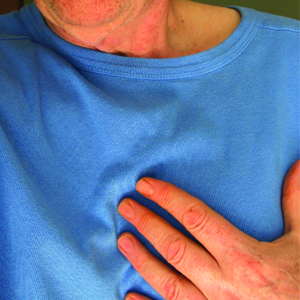Book Review – Heart Attacks, Heart Failure and Diabetes by Mark Starr, MD(H)
 Dr. Mark Starr, the author of a classic book titled Hypothyroidism Type 2: The Epidemic, recently published a book called Heart Attacks, Heart Failure, and Diabetes: Prevention and Treatment.
Dr. Mark Starr, the author of a classic book titled Hypothyroidism Type 2: The Epidemic, recently published a book called Heart Attacks, Heart Failure, and Diabetes: Prevention and Treatment.
You may ask, “Why is this relevant to thyroid disease?” The reason is that Dr. Starr relies heavily on the research of Dr. Broda Barnes, a pioneer in the treatment of thyroid disease, for this new book. Dr. Barnes detailed much of his research in Hypothyroidism, the Unsuspected Illness, a book published in 1976 that continues to be a mind opener for anyone interested in thyroid issues. Dr. Barnes also published a lesser known book that same year called Solved: the Riddle of Heart Attacks.
One would think that the field of medicine would have evolved significantly since 1976, providing us with more insight and better treatments. Sadly, this is not the case, and we find ourselves revisiting history for enlightenment.
Dr. Starr’s new book is a touchstone back to the very careful research provided by some of the giants in medical observations and research. He goes back as far as 1918 to Dr. Hermann Zondek’s profound work, which demonstrated that the enlarged heart in congestive heart failure can and does shrink back down to normal size when the underlying hypothyroidism is treated.
Dr. Starr notes that hypothyroidism and diabetes also go hand in hand. In fact, he contends that appropriate thyroid treatment can prevent the development of many of the secondary problems of diabetes, such as blindness, atherosclerosis, and neuropathies.
One of the highlights of Dr. Starr’s new book is a thorough discussion of the limitations of using thyroid-stimulating hormone (TSH) as an indicator of hypothyroidism. The thyroid gland produces 4 thyroid hormones: T1, T2, T3, and T4. The majority of the hormone produced is T4, which has very weak activity. The primary action from thyroid hormones comes from T3. In order to increase the availability of T3, enzymes in the body work to remove an iodine molecule from T4 to create T3.
As it turns out, there are separate enzymes at work in the pituitary gland, where TSH is produced, and the rest of the body. Because of these separate enzyme-producing systems, the amount of active T3 in the pituitary gland can be as much as 1000 times the amount of T3 available to the rest of the body. The production of TSH will stay low until the pituitary T3 is also exhausted. The result is that the body can be in a low thyroid state, with significant symptoms, for a long time before TSH levels are signaled to increase.
There is no better teacher than personal experience. Dr. Starr relates his own health struggle with untreated (at first!) hypothyroidism, and also shares some of his patients’ experiences.
This book serves as a reminder of the fundamental nature of thyroid function in diseases that are of epidemic proportions today. If you happen to start with this book, it will likely whet your appetite for even more of the type of information offered in his first book.




